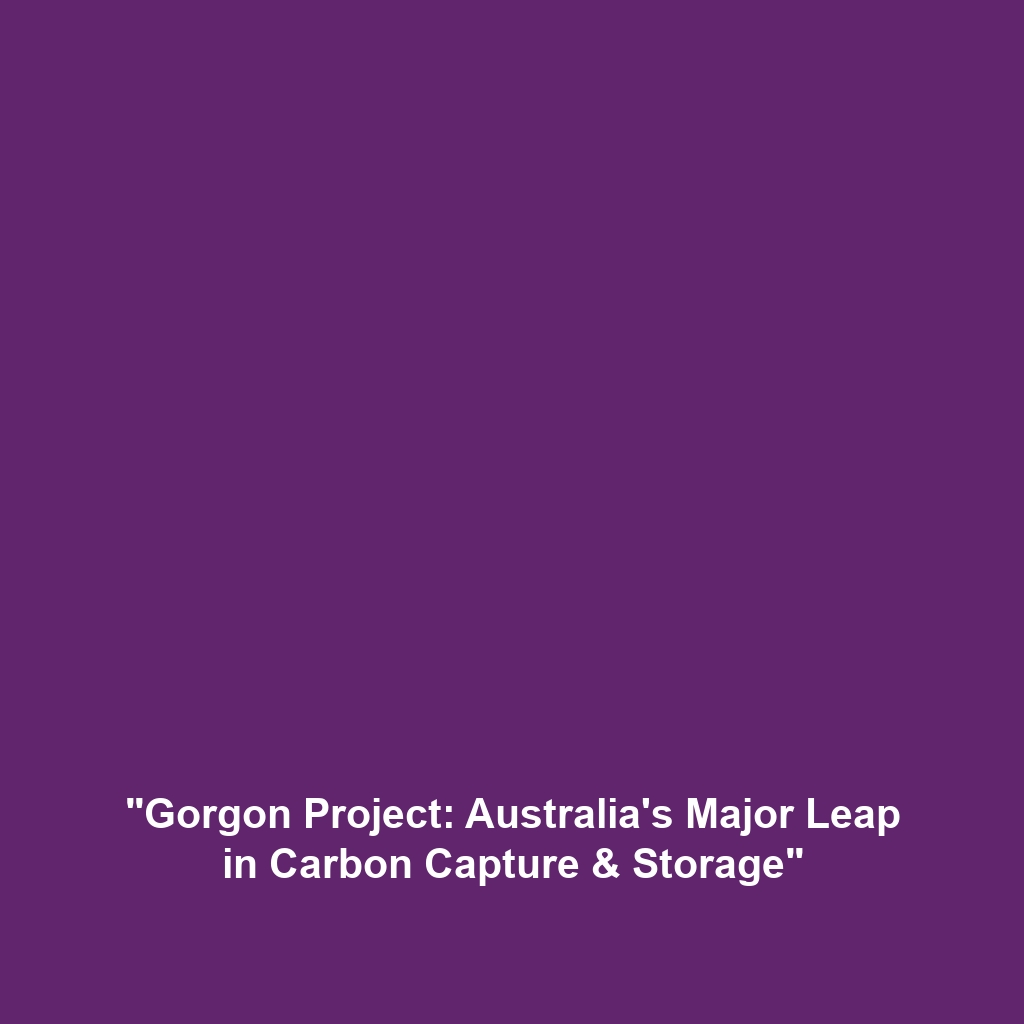Geological Storage: Storing CO2 Underground in Rock Formations
Introduction
Geological storage of carbon dioxide (CO2) represents a critical component in the fight against climate change as part of the broader Carbon Capture & Storage (CCS) strategy. This method involves storing CO2 deep underground in rock formations, preventing its emission into the atmosphere and thereby mitigating greenhouse gas effects. As the world seeks sustainable solutions to carbon emissions, understanding the significance and mechanisms of geological storage is essential for environmental preservation and achieving climate targets.
Key Concepts
Geological storage involves various principles and concepts that ensure the effective containment of CO2. Below are the primary components:
Storage Mechanisms
CO2 is stored in geological formations typically consisting of:
- Saline Aquifers: These porous rock layers are saturated with saltwater and are considered ideal for CO2 storage.
- Depleted Oil and Gas Reservoirs: Former extraction sites, offering a ready-made containment area for CO2.
- Unminable Coal Seams: Coal seams that are not economically viable for mining can also be utilized for CO2 storage.
Applications and Real-World Uses
Geological storage of CO2 has practical applications demonstrating its effectiveness as part of overall Carbon Capture & Storage (CCS) initiatives:
- Enhanced Oil Recovery (EOR): CO2 is injected into oil reservoirs to increase yield, thereby enabling geological storage.
- Industrial Processes: Facilities in sectors such as cement and steel are beginning to implement CO2 capture systems followed by geological storage.
- Research Projects: Numerous pilot projects exist worldwide, such as the Sleipner project in Norway, showcasing successful large-scale geological storage.
Current Challenges
Despite its promise, the geological storage of CO2 faces several challenges:
- Long-term Monitoring: Ensuring that stored CO2 remains contained over decades or centuries is complex and resource-intensive.
- Potential Leakage: There is a risk of CO2 leakage through inadequately sealed geological fault lines or fractures.
- Public Acceptance: Communities often resist the establishment of geological storage sites due to safety and environmental concerns.
Future Research and Innovations
Innovations in geological storage are evolving rapidly. Key areas of upcoming research include:
- Advanced Monitoring Technologies: New sensors and monitoring systems to detect leakage and measure storage effectiveness.
- Enhanced Recovery Techniques: Methods to improve the efficiency of CO2 injection in depleted reservoirs.
- New Geological Formations: The exploration of alternative formations, such as deep basalts for CO2 storage, is underway.
Conclusion
The geological storage of CO2 in rock formations plays a pivotal role in the Carbon Capture & Storage (CCS) paradigm. By effectively containing carbon emissions underground, this process can significantly contribute to climate change mitigation efforts. As research develops and methods improve, we encourage exploration of more resources on CCS technologies and related topics to uncover the full potential of carbon management strategies.


